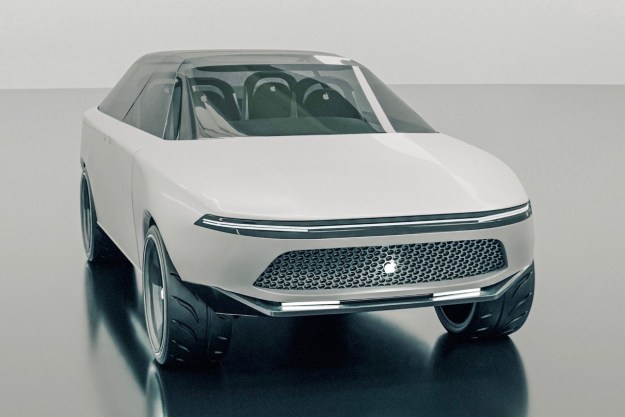Will racing still be exciting if human drivers are taken out of the equation? Roborace aims to find out.
Billed as the first race series for self-driving cars, Roborace unveiled its autonomous race car at the 2017 Mobile World Congress in Barcelona. Dubbed “the Robocar,” It will hit the track in demonstrations later this year, although it’s still unclear when the green flag will drop on the Roborace series itself.
The car was designed by Daniel Simon, who previously designed futuristic vehicles for movies, including Tron: Legacy and Oblivion, and now has the title of chief design officer at Roborace. The finished product looks similar to the concept images released by Simon last year, with a design dramatically different from that of any human-driven race car.
While it doesn’t have any room for a driver, the Robocar carries plenty of sensors, which it uses to “see” the environment. The total complement includes five lidar units, two radar units, 18 ultrasonic sensors, two optical speed sensors, six cameras, and a GPS unit. The car’s “brain” is Nvidia’s Drive PX 2 platform, which has also been adapted by Volvo for use in its prototype self-driving cars. In addition to Nvidia, Roborace is partnering with Charge (a U.K.-based electric truck company) to supply certain vehicle components, while Michelin will be the series’ tire supplier.
Just being able to drive itself isn’t enough to make the Robocar a real race car, though. Roborace claims the car will be fast, quoting a top speed of over 320 kph (198 mph). It says the car weighs 975 kilograms (2,149 pounds), and is powered by four electric motors, each producing 300 kilowatts (402 horsepower).
Robotic cars won’t be circulating the world’s racetracks at nearly 200 mph just yet, though. Roborace will continue to conduct demonstrations with its DevBot prototypes, which drove together on a track for the first time during the Formula E race in Buenos Aires earlier this month. Two Robocars will also run on a track together later this year.
Editors' Recommendations
- Tesla Autopilot vs. full self-driving: What’s the difference?
- Cruise autonomous vehicle drives over woman just after she was hit by another car
- An autonomous car in San Francisco got stuck in wet concrete
- Volkswagen is launching its own self-driving car testing program in the U.S.
- Autonomous cars confused by San Francisco’s fog



